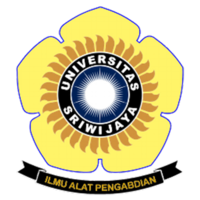Kajian Karakteristik Indeks Kualitas Air Menggunakan Metode IP, Storet Dan NSF WQI: Review
Abstract
Hoya AL, Yuliastuti N, Sudarno S. 2020. Study of water quality index characteristics using ip, storetic and NSF WQI methods: Review. In: Herlinda S et al. (Eds.), Prosiding Seminar Nasional Lahan Suboptimal ke-8 Tahun 2020, Palembang 20 Oktober 2020. pp. xx. Palembang: Penerbit & Percetakan Universitas Sriwijaya (UNSRI).
Water is one of the main needs of living things. Everyday human life needs water, starting from drinking water, water recreation, aquaculture, animal husbandry and agriculture. About ¾ of the human body is made up of water. Water is very important, so humans must maintain the availability of water. Water availability needs to be balanced with the maintenance of water quality, so that it can be seen that the water is in good condition or polluted. Clean water needs attention according to SDGs number 6 concerning the availability of clean water and sanitation. The quality of water in water bodies such as rivers, lakes, swamps, reservoirs and others needs to be monitored so that water can be used properly according to its purpose. This study aims to examine the method of calculating the water quality index which is commonly used in determining water status so that the characteristics of the water quality method can be identified and the advantages and disadvantages of this method. The method used is literature study from related journals. The water quality index (IKA) method used in Indonesia includes the IP, Storet and NSF WQI methods. The results of the study will describe the advantages and disadvantages as well as the characteristics of the appropriate method used in accordance with the research needs which are expected to facilitate the selection of water quality monitoring methods.
Water is one of the main needs of living things. Everyday human life needs water, starting from drinking water, water recreation, aquaculture, animal husbandry and agriculture. About ¾ of the human body is made up of water. Water is very important, so humans must maintain the availability of water. Water availability needs to be balanced with the maintenance of water quality, so that it can be seen that the water is in good condition or polluted. Clean water needs attention according to SDGs number 6 concerning the availability of clean water and sanitation. The quality of water in water bodies such as rivers, lakes, swamps, reservoirs and others needs to be monitored so that water can be used properly according to its purpose. This study aims to examine the method of calculating the water quality index which is commonly used in determining water status so that the characteristics of the water quality method can be identified and the advantages and disadvantages of this method. The method used is literature study from related journals. The water quality index (IKA) method used in Indonesia includes the IP, Storet and NSF WQI methods. The results of the study will describe the advantages and disadvantages as well as the characteristics of the appropriate method used in accordance with the research needs which are expected to facilitate the selection of water quality monitoring methods.
Keywords
pollution index method, water monitoring
Full Text:
PDFArticle Metrics
Abstract view : 1390 timesPDF - 4129 times
Refbacks
- There are currently no refbacks.

